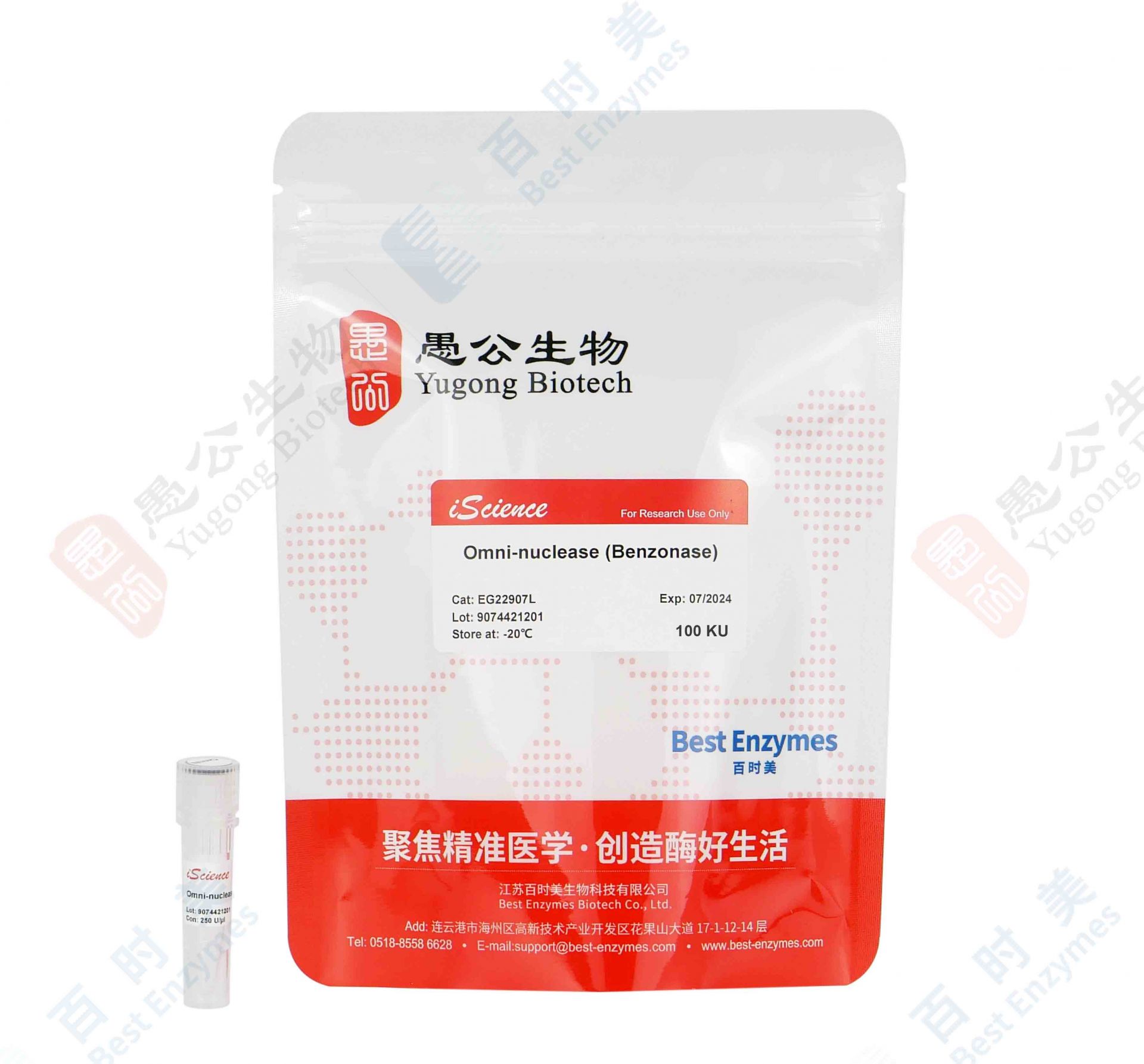PRODUCT
Omni-nuclease (Benzonase)
REF No.:
- EG22907S
- EG22907L
Specs:
25 KU
Price:
$60
Specs:
100 KU
Price:
$202
Description
The Omni-nuclease is the nuclease from Serratia marcescens, also known as Benzonase, obtained through yeast recombinant expression. This enzyme is composed of two subunits, each with a size of 26 kDa. Its activity is 34 times stronger than that of DNase I, efficiently hydrolyzing various forms of DNA and RNA to 5'-monophosphate oligonucleotides with lengths of 3 to 5 bases. The enzyme's activity requires Mg²⁺, with an optimal pH range of 6 to 10 and an ideal reaction temperature of 37℃ .
This product is free from bacterial endotoxin residues and maintains high stability and activity under a wide range of conditions, such as 6 M urea, 0.1 M Guanidine HCl, 0.4% Triton X100, 0.1% SDS, 1 mM EDTA, 1 mM PMSF, or 0.4% Sodium deoxycholate. It is highly suitable for the vaccine, protein, and polysaccharide pharmaceutical industries, removing nucleic acid residues from samples or products, thereby enhancing sample purity and the biological efficacy of the products.
Components
|
Component |
EG22907S |
EG22907M | EG22907L |
|
Omni-nuclease (Benzonase) (250 U/μl) |
25 KU |
50 KU | 100 KU |
Applications
1. Degradation of all forms of DNA and RNA. This serves as the optimal tool for removing nucleic acid (DNA and RNA) contaminants in the preparation processes of vaccines, antibodies, cell therapies, and other biopharmaceutical products, thereby meeting the FDA's standard that nucleic acid residues in therapeutic biological products should not exceed 10 pg/dose.
2. Degrading nucleic acids to reduce the viscosity of cell lysates. This aids in the purification processes of cell-derived particles, such as viruses, AAV vectors, and inclusion bodies. It facilitates solution filtration/ultrafiltration processes, shortens processing time, improves the efficiency of sedimentation and separation between the precipitate and supernatant during centrifugation, and enhances chromatographic purification efficiency. Ultimately, this leads to increased yield and product purity.
3. Bioanalytical applications. It can be used in processes such as ELISA sample preparation, chromatography, two-phase electrophoresis (protein profiling), and imprint analysis to enhance resolution and sample recovery rates.
Notice
1. When handling RNA samples, please add them to RNase-free tubes.
2. The effective temperature of Omni-nuclease (Benzonase) is 0~42℃ , with the optimal temperature being 37 ℃ . Enzyme activity is reduced at lower temperatures, and this can be compensated for by adding 2~5 times enzymes or by extending the digestion time (to 2~3 hours).
3. Crude samplets containing a large amount of protein, cell walls, and other salts partially inhibit the enzyme's activity, requiring an increase in the enzyme dosage when used.
4. The concentration of enzymes is ≥250 U/μl. For small-scale samples, the enzyme can be diluted to a certain concentration in a dilution buffer (20 mM Tris-Cl pH8.0, 2 mM MgCl2 , 2 mM NaCl) and then added to the reaction mixture. However, the diluted enzyme can only be stored for a few days at 4℃ .
5. This product is provided in liquid form and can be directly added to the lysis for use.
6. For your safety and health, please wear a lab coat, disposable gloves, and a mask when conducting experiments.
Storage Condition
-20℃


